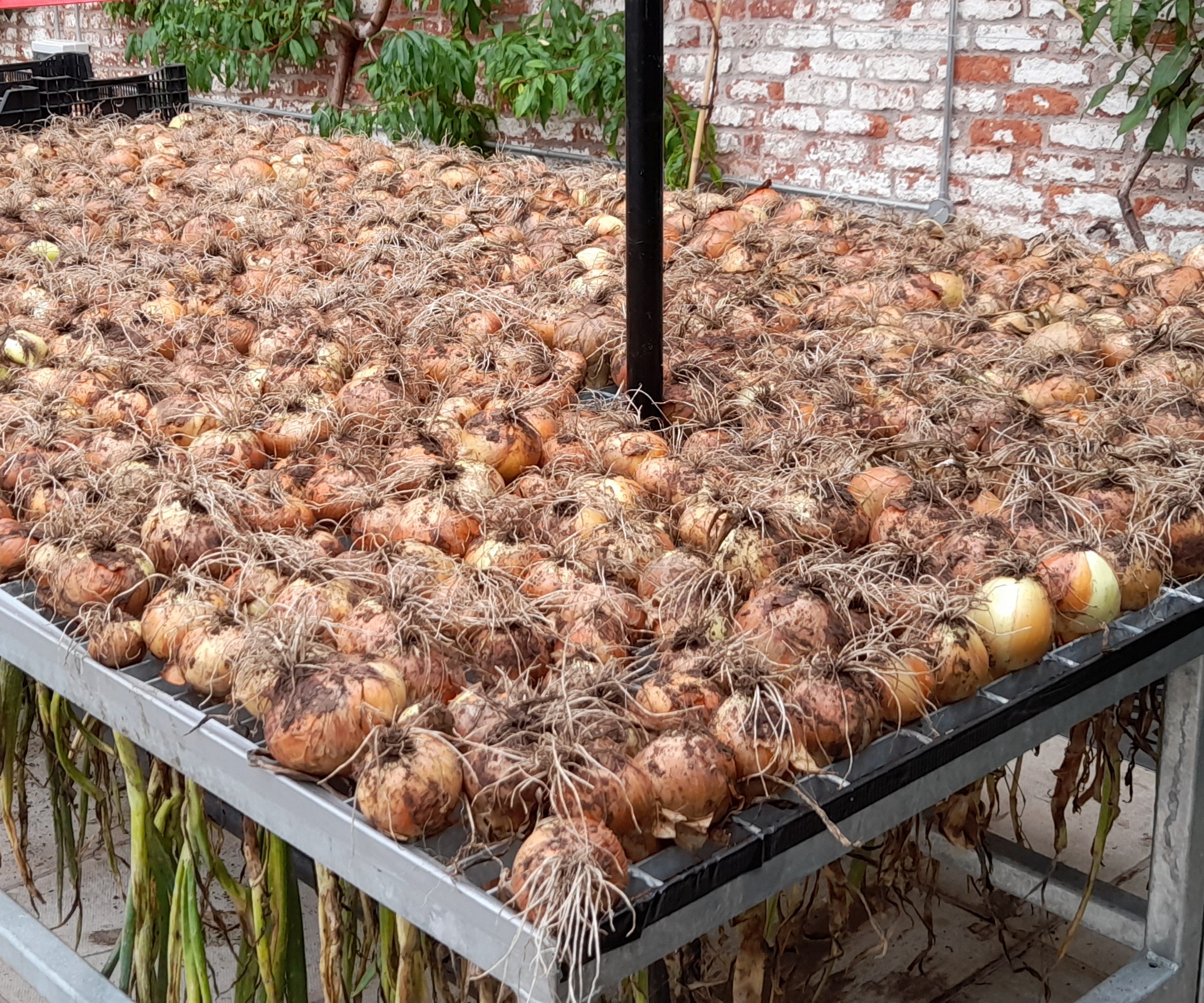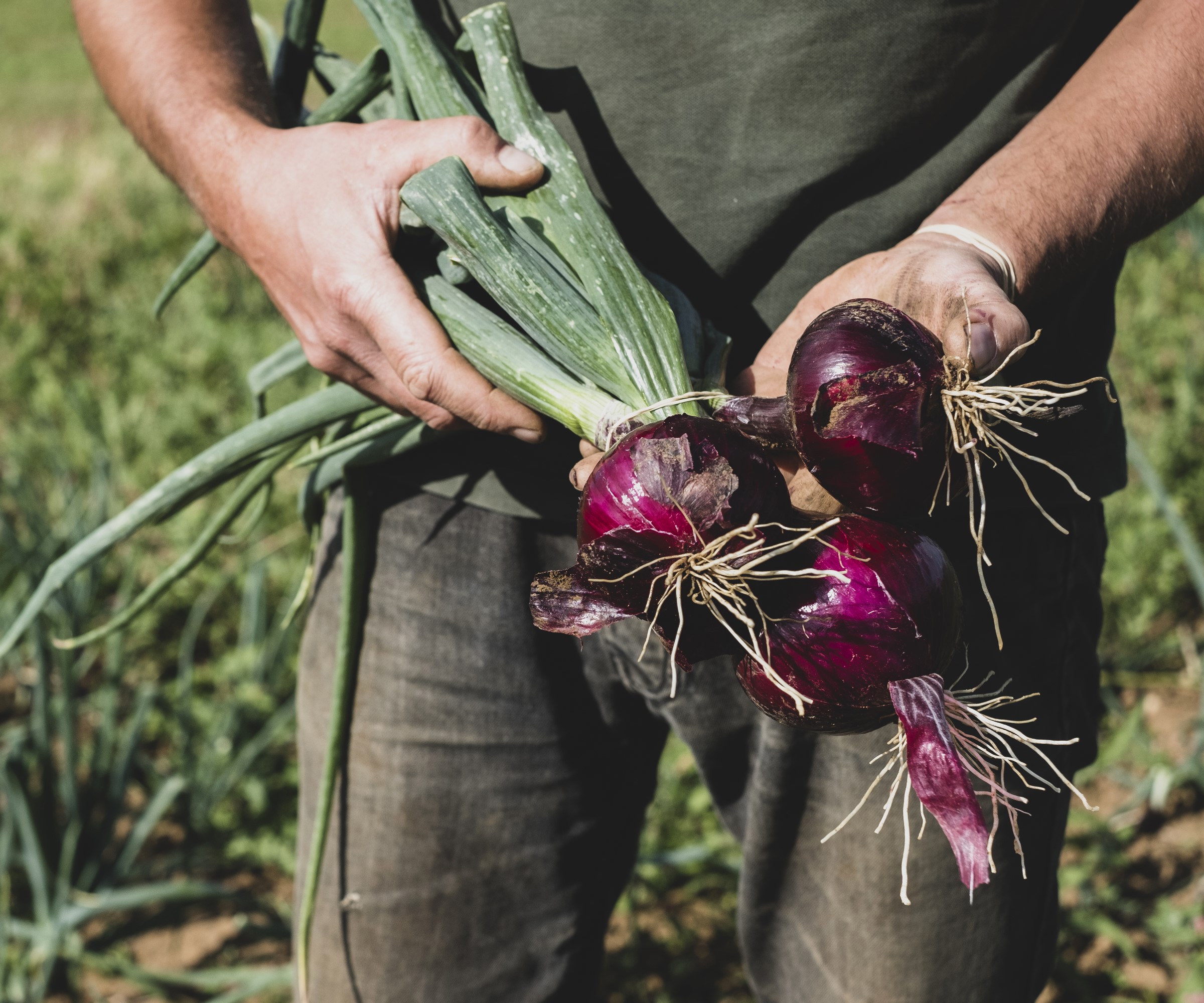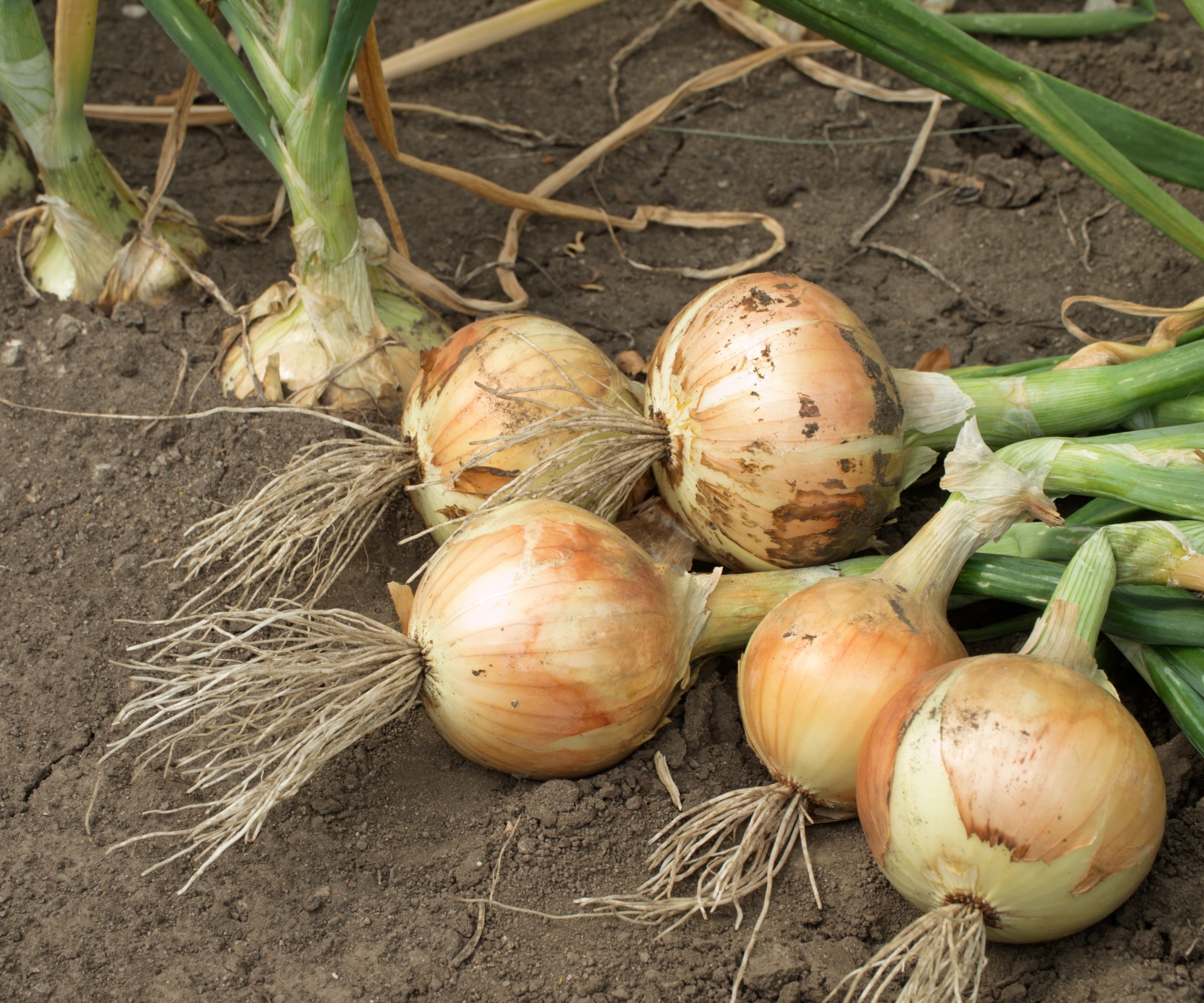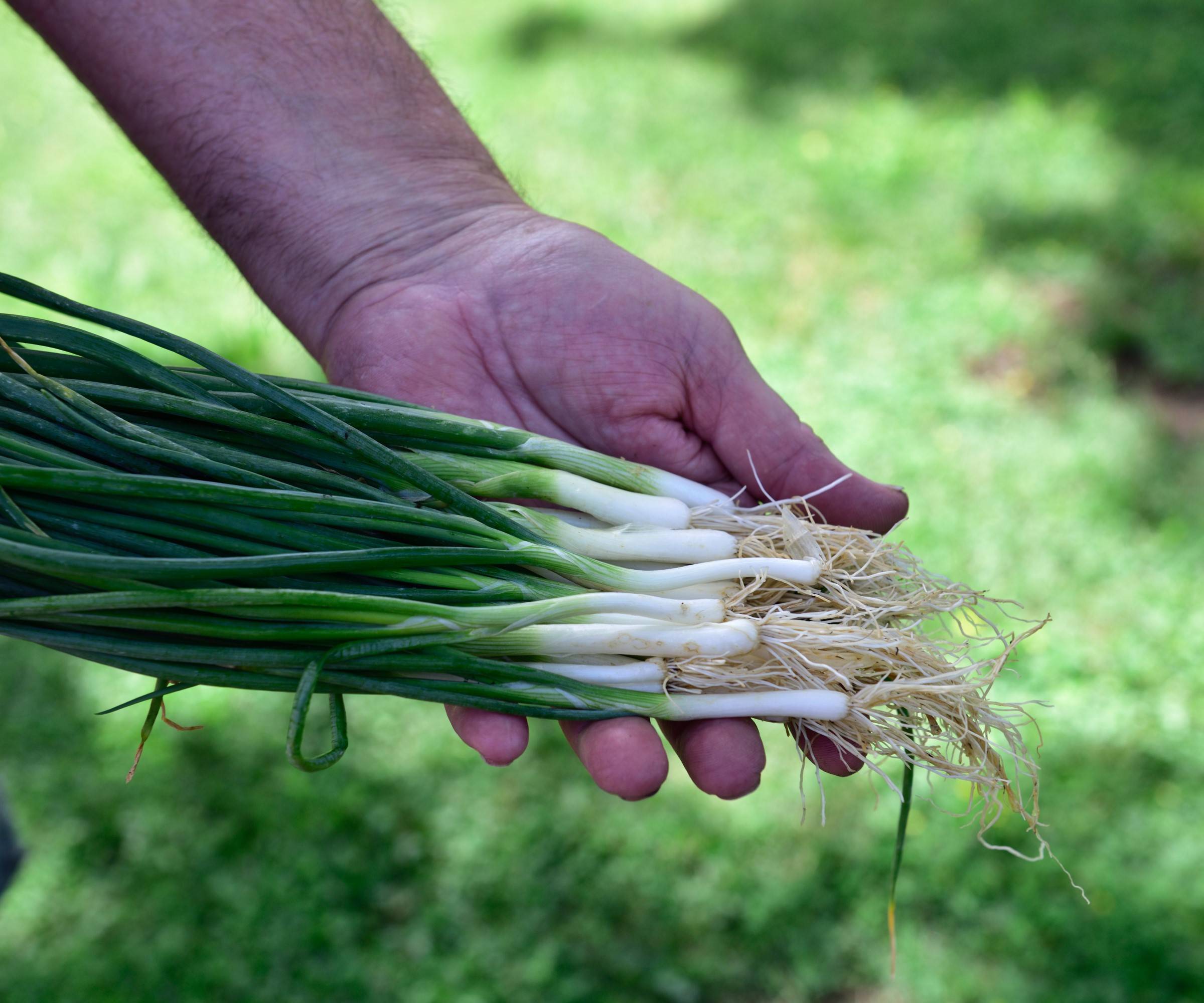How to harvest onions – expert tips for lifting your crops successfully
Discover the signs that show your onions are ready to lift and how to properly crop the bulbs whether for using or storing


Onions are one of the most popular crops to grow and their harvesting is commonly completed during summer and fall, depending on the cultivars grown. It is a task that requires observation to spot the right timing and care to properly dry the crop ready for storage.
I have grown onions for many years in the kitchen gardens in which I worked. They were always a popular crop, both with chefs and the public, and were grown in large numbers – I remember in particular one year I got carried away and grew close to 800 onions in the walled garden.
When it comes to growing onions, there are options for the grower, in terms of how, when, and what to grow. Whichever way you choose, it is imperative to know exactly how to harvest your onion crop.

Some of my 2022 onion harvest drying in the glasshouse

Drew is a former professional gardener who specialized in growing vegetables and fruit. He worked in kitchen gardens for the National Trust in the UK for several years and then ran a productive walled garden growing vegetables, fruit, herbs, microgreens, and flowers for chefs. He has grown and harvested onions every year in his vegetable gardens.
How to harvest onions and dry them
Knowing how to harvest onions correctly is important as it reduces the risk of causing damage to the plant or the bulbs. Any damage or bruising caused during the harvesting process could cause them to rot when they are stored. The bulbs want to be lifted from the soil with the tops intact and it is recommended to use any damaged onions immediately.
Lifting your crops from the ground is relatively simple if you follow these key steps:
- To harvest onions, use a garden fork and gently lift the bulb from the ground – they usually come apart from the soil easily. Do not grab the onion by the foliage and pull, as this can damage the stem.
- Onions need to be dried and cured before being stored. This can be done outdoors, laying the crop out on the soil in dry weather – however that is not always possible. The onions can be placed on a wire rack undercover instead if the weather is wet. Either way, the onions need be moved undercover after a few days to further dry if you want to store them for a longer period.
- Any chosen spot to dry onions should be well-ventilated and cool. This can be in a greenhouse or polytunnel, or it can be in a garden building such as a garage or shed.
- The drying process should take around two to three weeks and the onions are ready when the skins are paper-dry. Ensure to handle the bulbs carefully as any cuts or bruises can lead to rot.
- Store onions in a frost-free, dry, and well-ventilated place.

Gently lifting onions with a garden fork is a good way to harvest them
How to know when onions are ready to harvest
The exact time for when to lift your onions depends on the type of onions you are growing and when they were planted. However, it is always a case of keeping a close eye on your crops and looking for the tell-tale signs that your onions are ready to harvest.
When to harvest onions can also depend on your plans for them. Once an onion reaches a usable size, it can be harvested and be used immediately. If your intention is to lift them to store, then it is the foliage that will tell you when it is time to be lifted. A tell-tale sign will be the erect foliage starting to turn yellow and falling over when the onions are large. The sight of the onion's foliage turning yellow and straw-colored is a sign that the bulbs have finished growing and they are naturally drying out.
Design expertise in your inbox – from inspiring decorating ideas and beautiful celebrity homes to practical gardening advice and shopping round-ups.
It has been common practice among growers for many years to fold the onion tops manually when they start to turn yellow. This stops the onions from taking in water and brings forward the ripening process. After the tops are folded, the onions would be left in the ground for up to a week before being lifted. However, care needs to be taken not to damage the bulbs as this will impair their storage life. It is thought nowadays that manually folding onion tops can actually damage the tissue and increase the risk of neck rot.

Onions are perfectly good to be used immediately after harvest
How long until onions are ready to harvest?
The length of time onions take to grow will depend on factors including when you planted your onions, location, and temperature. It will also be influenced by how you grew your onions, whether it was by onion sets or onion seeds.
Onions grown from sets tend to take around 80 days to go from planting to harvesting. This increases to around 100 days when grown from seed, taking around three months from transplanting the onion seedlings to having a bulb ready to lift.
There are varieties of onions that can be planted in fall for over-wintering, and they will be ready to harvest earlier in the year. Hardier varieties of onion sets that are planted in fall tend to be ready for harvest early to mid-summer. Sets that are sown in the spring are usually ready to be lifted in late summer or early fall.
You can buy onion sets from Walmart and Burpee.

Onions should ideally sit on the soil surface for a few days
How to harvest bunching onions
There are many different types of onions and those known as bunching onions, also called green onions or scallions, are a bit different to bulb onions and grown for their stems and tops, rather than the bulbs. These types of onions grow much quicker and can be ready in just 60 days from sowing.
Bunching onions can be harvested in one of two ways. The entire plant can be pulled and used, or the leaves can be cut to leave the developing bulb in the ground and a new set of leaves will grow back quickly.
Even if you pull the entire plant and cut off the leaves to use in the kitchen, you can easily grow green onions from scraps by placing the bulb ends in water or soil to sprout new leaves and roots.

Bunching onions are usually sown from seed direct into their growing spot
FAQs
Do you stop watering onions before harvest?
It is best practice to stop watering onions after mid-summer once the bulbs have swollen. Once you notice the first leaves on your onion start to fall, then definitely stop watering the crop. You want to stop watering onions around 7-14 days before harvesting to help them mature. By halting watering, it reduces the risk of rotting and helps the crop ripen.
Can you pick an onion too early?
An onion can be picked once it gets to a viable size. However, the smaller they are picked then the shorter their life-span. Young onions can be picked as scallions before they have developed a bulb and small onions can be picked and used in the kitchen, however their lack of skin will mean they cannot be stored. If you are growing onions to store, then you need to wait until the foliage has toppled before lifting.

Drew has worked as a writer since 2008 and was also a professional gardener for many years. As a trained horticulturist, he worked in prestigious historic gardens, including Hanbury Hall and the world-famous Hidcote Manor Garden. He also spent time as a specialist kitchen gardener at Soho Farmhouse and Netherby Hall, where he grew vegetables, fruit, herbs, and cut flowers for restaurants. Drew has written for numerous print and online publications and is an allotment holder and garden blogger. He is shortlisted for the Digital Gardening Writer of the Year at the 2025 Garden Media Guild Awards.